Breast Augmentation Washington DC
Introduction
Breast augmentation is a procedure to enhance the size of a woman’s breasts. Candidates may be women who have lost breast projection and or size after pregnancy or breastfeeding. Other women may not have had children but just have a desire to enhance their breast volume to obtain more balance in their figure or augment their natural breast size.
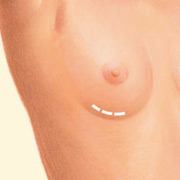
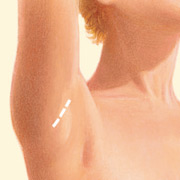
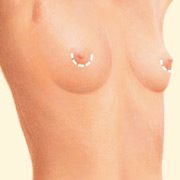
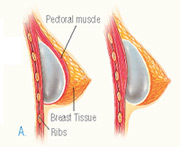
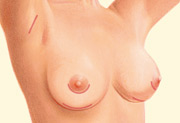
The Best Candidates for Breast Augmentation
Breast augmentation, technically known as augmentation mammoplasty, is a surgical procedure to enhance the size and shape of a woman’s breasts for a number of reasons:
- To enhance the body contour of a woman who, for personal reasons, feels her breast size is too small.
- To restore breast volume lost due to weight loss or following pregnancy
- To achieve better symmetry when breasts are moderately disproportionate in size and shape
- To improve the shape of breasts that are sagging or have lost firmness, often used with a breast lift procedure
- To provide the foundation of a breast contour when a breast has been removed or disfigured by surgery to treat breast cancer
- To improve breast appearance or create the appearance of a breast that is missing or disfigured due to trauma, heredity, or congenital abnormalities
Breast augmentation can enhance your appearance and improve your self-confidence, but it will not necessarily change your looks to match your ideal image or cause other people to treat you differently. Before you decide to have surgery, think carefully about your expectations and discuss them with Dr. Baker.
The best candidates for breast augmentation are women who are looking for improvement, not perfection, in the way they look. If you are physically healthy and realistic in your expectations, you may be a good candidate.
Evaluation
In your initial consultation, Dr. Baker will evaluate your health and explain which surgical techniques are most appropriate for you based on the condition of your breasts and skin tone. If your breasts are sagging, he may also recommend a breast lift.
Be sure to discuss your expectations openly with Dr. Baker. You may want to ask him for a copy of the manufacturer’s insert that comes with the implant he will use — just so you are fully informed about it. Finally, be sure to tell Dr. Baker if you smoke and if you are taking any medications, vitamins, or other drugs.
In addition to explaining your surgical procedure, Dr. Baker will also explain the type of anesthesia to be used, the type of facility where the surgery will be performed, and the recovery process, your obligations as a patient, and the costs involved. Because insurance companies do not consider breast augmentation to be medically necessary, carriers do not cover the cost of this procedure unless it is for the purpose of reconstruction.
What Is a Breast Augmentation?
By inserting an implant behind each breast, Dr. Baker is able to increase your breast size by one or more cup sizes. If you are considering breast augmentation, this page will give you a basic understanding of the procedure–when it can help, how it is performed, and what results you can expect. It cannot answer all of your questions, since a lot depends on your individual circumstances. Please ask Dr. Baker if there is anything you do not understand about the procedure. His job is to make sure you have all the information you need to make the best decision for yourself.
The method of inserting and positioning your implant will depend on your anatomy and Dr. Baker’s recommendation. The incision can be made either in the crease where the breast meets the chest (the inframammary fold), around the areola (the dark skin surrounding the nipple) or in the armpit. Every effort will be made to assure that the incision is placed so resulting scars will be as inconspicuous as possible.
Working through the incision, Dr. Baker will lift your breast tissue and skin to create a pocket, either directly behind the breast tissue (submammary or subglandular placement) or beneath the pectoral muscle on top of the chest wall (submuscular placement). Once the implant is positioned within this pocket, the incisions are closed with sutures, skin adhesive and/or surgical tape. A gauze bandage may be applied over your breasts to help with healing. The surgery usually takes one to two hours to complete. You’ll want to discuss the pros and cons of these alternatives with Dr. Baker before surgery to make sure you fully understand the implications of the procedure he recommends for you.
Types of Breast Implants
The choice of implant filler, implant size, shape, and other features will be determined based on your breast anatomy, body type, and your desired increase in size. Your lifestyle, goals, and personal preferences, as well your plastic surgeon’s recommendations and sound surgical judgment are also determining factors. Implant manufacturers occasionally introduce new styles and types of implants, and therefore there may be additional options available to you.
Breast implants are medical devices with a solid silicone shell. The implant shell may be filled with either saline solution (sterile saltwater) or cohesive silicone gel. Both saline and silicone gel breast implants are approved by the U.S. Food and Drug Administration (FDA). Approval means that an implant has been rigorously researched and tested and reviewed by an independent panel of physicians for safety.
The size of a breast implant is measured in cubic centimeters (ccs) based on the volume of the saline or silicone filler. Breast implants vary both by filler and in size, but there are additional features to consider:
- Texture: the implant shell may be smooth or textured
- Shape: the implant may have a round profile or one that is anatomic (teardrop or tapered shape)
- Profile: the implant may have a low, medium or high projection (the depth of the implant from the base to the highest point of the implant curve)
- Diameter: the width of the implant measured across its base (the side of the implant that will be positioned over the chest wall)
Adult women of any age can benefit greatly from the enhancement breast implants provide. It is usually recommended, however, that a woman’s breasts are fully developed prior to placement of breast implants. Saline implants are FDA approved for augmentation in women 18 years of age and older. Silicone implants are FDA approved for augmentation in women age 22 and older. Saline or silicone implants may be recommended at a younger age if used for reconstruction purposes.
You should be aware that breast implants are not guaranteed to last a lifetime and future surgery may be required to replace one or both implants. Regular examinations for breast health and to evaluate the condition of your implants are important whether you have chosen saline or silicone breast implants.
Preparing For Your Surgery
Dr. Baker will give you instructions to prepare for surgery, including guidelines on eating and drinking, smoking, and taking or avoiding certain vitamins and medications. A mammogram may be recommended prior to your procedure to ensure breast health and serve as a baseline for future comparison.
While making preparations for surgery, be sure to arrange for someone to drive you home after your surgery and stay with you for the first 24 hours. You may also need someone to help you out for a few days depending on your circumstances.
Whether Dr. Baker performs your breast augmentation at Georgetown University Hospital (Washington D.C.), Inova Fairfax Hospital (Falls Church, VA), or an ambulatory surgical facility (McLean, VA), you should arrange for someone to drive you home after your surgery, and to help you out for a day or two.
Anesthesia
Breast augmentation can be performed with general anesthesia, so you will sleep through the entire operation. Dr. Baker performs this operation in either a freestanding surgery center or the hospital.
Risks and complications
Breast augmentation is relatively straightforward. But as with any operation, there are risks associated with surgery and specific complications associated with this procedure. The most common problem, capsular contracture, occurs if the scar or capsule around the implant begins to tighten. This squeezing of the soft implant can cause the breast to feel hard. Capsular contracture can be treated in several ways, and sometimes requires either removal or “scoring” of the scar tissue, or perhaps removal or replacement of the implant.
As with any surgical procedure, excessive bleeding following the operation may cause some swelling and pain. If excessive bleeding continues, another operation may be needed to control the bleeding and remove the accumulated blood.
A small percentage of women develop an infection around an implant. This may occur at any time but is most often seen within a week after surgery. In some cases, the implant may need to be removed for several months until the infection clears. A new implant can then be inserted.
Some women report that their nipples become oversensitive, under-sensitive, or even numb. You may also notice small patches of numbness near your incisions. These symptoms usually disappear within time, but might be permanent in some patients.
Breast implants do not generally interfere with a woman’s ability to breastfeed or present a health hazard during pregnancy to a woman or her baby. However, pregnancy and the associated changes to a woman’s body may alter the results of any breast surgery, including breast augmentation. Therefore, it is important to discuss the options of breast implant surgery with Dr. Baker
if you are interested in becoming pregnant and breastfeeding in the future.
Occasionally, breast implants may break or leak. Rupture can occur as a result of injury or even from the normal compression and movement of your breast and implant, causing the man-made shell to leak.
- If a saline-filled implant breaks, the implant will deflate in a few hours and the saltwater will be absorbed and naturally expelled by the body.
- If a silicone-gel filled implant leaks or breaks, the elastic silicone gel may remain within the implant shell or may escape into the breast implant pocket (a capsule of tissue that surrounds the implant). A leaking implant filled with silicone gel may not deflate and may not be noticeable except through imaging techniques such as an MRI. For this reason, a woman with silicone breast implants is advised to visit her plastic surgeon annually to assess that her implants are functioning well. An ultrasound exam or MRI screening can assess the condition of breast implants; after 3 years it is recommended that all silicone implants be properly screened.
Following the placement of breast implants mammography is technically more difficult. Obtaining the best possible results requires specialized techniques and additional views. You must be candid about your implants when undergoing any diagnostic breast exam. In many cases, an ultrasound exam or MRI may be recommended in addition to mammography.
While the majority of women do not experience these complications, you should discuss each of them with your physician to make sure you understand the risks and consequences of breast augmentation.
Recovery
You are likely to feel tired and sore for a few days following your surgery, but you will be up and around in 24 to 48 hours. Most of your discomfort can be controlled by medication prescribed by Dr. Baker’s office. Within several days, the gauze dressings, if you have them, will be removed, and you may be given a surgical bra. You should wear it as directed by Dr. Baker. You may also experience a burning sensation in your nipples for about two weeks, but this will subside as bruising fades. Your stitches will come out in a week to 10 days, but the swelling in your breasts may take three to five weeks to disappear.
You should be able to return to work within a few days, depending on the level of activity required for your job. Follow Dr. Baker’s advice on when to begin exercises and normal activities. Your breasts will probably be sensitive to direct stimulation for two to three weeks, so you should avoid much physical contact. After that, breast contact is fine once your breasts are no longer sore, usually three to four weeks after surgery.
Your scars will be firm and pink for at least six weeks. Then they may remain the same size for several months, or even appear to widen. After several months, your scars will begin to fade, although they will never disappear completely.
Routine mammograms should be continued after breast augmentation for women who are in the appropriate age group, although the mammography technician should use a special technique to assure that you get a reliable reading, as discussed earlier.
Your New Look
For many women, the result of breast augmentation can be satisfying, even exhilarating, as they learn to appreciate their fuller appearance. Even if you believe your implants are functioning well, it is important that you follow up as directed with your plastic surgeon to assess the condition of your breast implants. In addition, whether you choose to have breast implants or not, it is essential to your health that you practice a monthly breast self-exam and schedule regular diagnostic breast screenings.
Your decision to have breast augmentation is a highly personal one that not everyone will understand. The important thing is how you feel about it. If you’ve met your goals, then your surgery is a success.
Contact Our Office
Dr. Stephen Baker is a highly skilled plastic surgeon who is dedicated to providing patients with innovative aesthetic surgery procedures that deliver excellent results. If you’re interested in learning more about breast augmentation in Washington DC, contact our office to schedule your consultation today.






